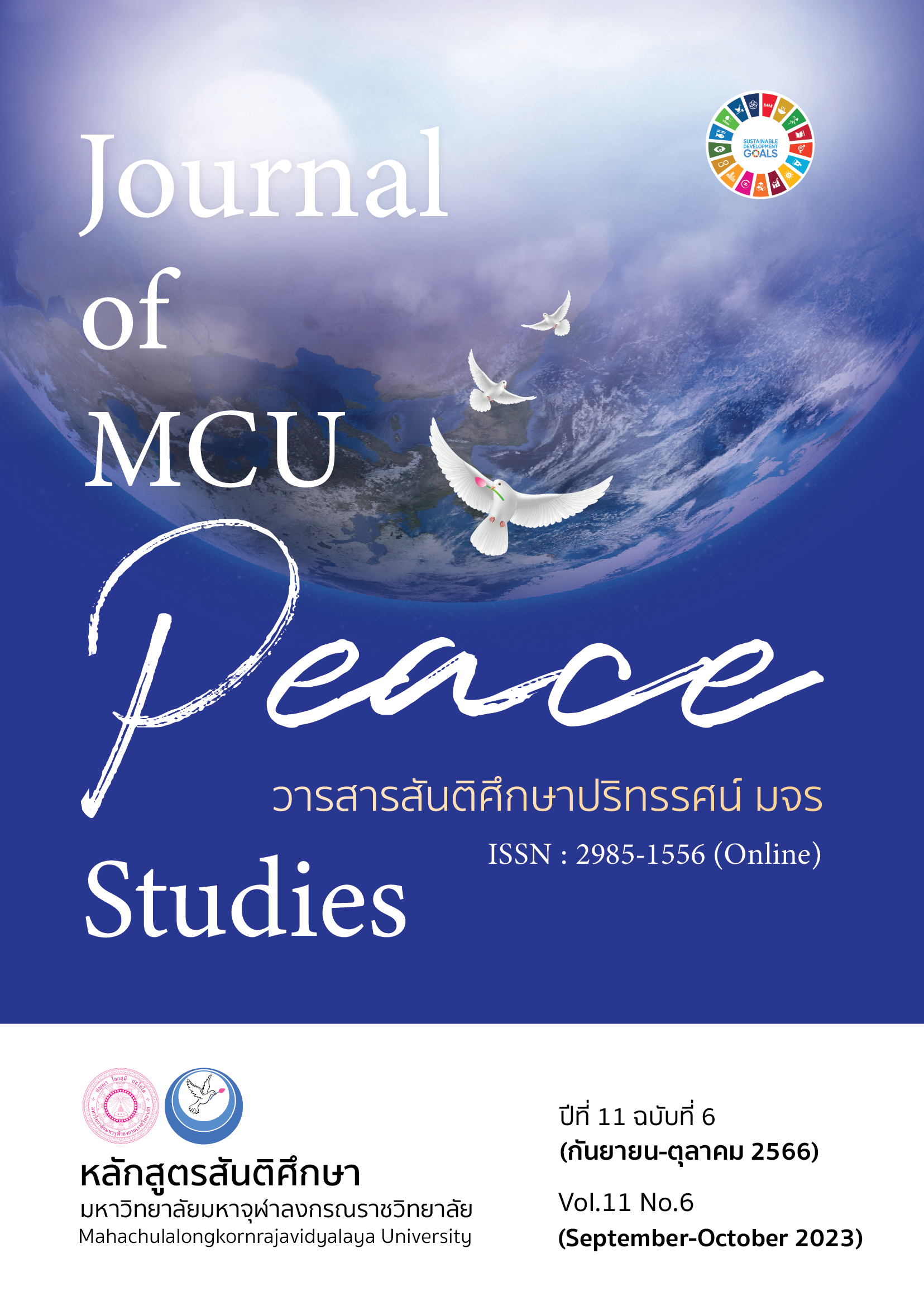The Application of Enterprise Resource Planning System Affecting Entrepreneurs’ Competitive Advantages in Thailand’s Automotive Parts Manufacturing Industry
Main Article Content
Abstract
The research article aimed at 1) investigating the effects of applying the enterprise resource planning system on production speed; 2) exploring the effects of applying the enterprise resource planning system on the organizational efficiency of entrepreneurs in Thailand’s automotive parts manufacturing industry; and 3) examining the congruence of enterprise resource planning system application on production speed, organizational efficiency, and competitive advantage of entrepreneurs in Thailand’s automotive parts manufacturing industry. The study used a mixed-method approach, with qualitative data obtained through in-depth interviews with seven key informants and quantitative data acquired through questionnaires sent to employees in Thailand's automotive parts manufacturing industry. Harry's criteria was used to calculate the sample size, which included 536 individuals selected using convenience sampling. The structural equation model was used to analyze the obtained data.
From the study, it appears that the structural equation model is congruent with the empirical data in the following respects: Chi-square = 106.268, df = 97, Chi-square/DF = 1.096, GFI = 0.979, CFI = 0.998, RMSEA = 0.013. The research results also found as follows: 1) The application of the enterprise resource planning system has a positive effect on production speed of 0.90, organizational efficiency of 0.38, and entrepreneurs’ competitive advantages of 0.32; and 2) Production speed has a positive effect on organizational efficiency of 0.48, while organizational efficiency has an effect on entrepreneur’s competitive advantages of 0.38. As a result, the application of an enterprise resource planning system plays an important role in developing the organizational efficiency and competitive advantages of enterprises in Thailand’s automotive parts manufacturing industry.
Article Details

This work is licensed under a Creative Commons Attribution-NonCommercial-NoDerivatives 4.0 International License.
Views and opinions expressed in the articles published by The Journal of MCU Peace Studies, are of responsibility by such authors but not the editors and do not necessarily reflect those of the editors.
References
Ali, M., Nasr, E., & Gheith, M. H. (2017). Benefits and Challenges of Cloud ERP Systems - A Systematic Literature Review. Future Computing and Informatics Journal, 1(1), 1-9.
AL-Qudah, H. S. S. (2020). Impact of Moral & Material Incentives on Employee’s Performance; An Empirical Study in Private Hospitals at Capital Amman. International Business Research, 9(11), 222-234.
Beheshti et al. (2014). Selection and Critical Success Factors in Successful ERP Implementation. Competitiveness Review, 24(4), 358-375.
Boonsin, S. (2017). Human Resource Management. Chiang Mai: Research Administration Center Chiang Mai University.
Ellran, L. M., & Cooper, M. C. (2014). Supply Chain Management: It's All about the Journey, Not the Destination. Journal of Supply Chain Management, 50(1), 1-29.
Fan, G. G. Z. (2018). Customized Manufacturing Enterprise Resource Planning System for Offsite Modular Light Gauge Steel Construction. (Master's Thesis). University of Alberta. Cannada.
Iyer, A., Saranga, H., & Seshadri, S. (2013). Effect of Quality Management Systems and Total Quality Management on Productivity Before and After: Empirical Evidence from the Indian Auto Component Industry. Production and Operations Management, 22(2), 283-301.
Laonant, S. (2013). Organization Development. (2nd ed.). Bangkok: DD Bookstore.
Papula, J., & Volna, J. (2013). Core Competence for Sustainable Competitive Advantage. Multidisciplinary Academic Research, Praha: MAC Prague Consulting.
Priyono, A., Idris, F., & Abdul Halim Lim, S. B. (2020). Achieving Ambidexterity in Internationalization: Analysis of How SMEs Cope with Tensions between Organizational Agility–Efficiency. Journal of Open Innovation: Technology, Market, and Complexity, 6(4), 1-19.
Prueksatawan, C. (2011). Factors Affecting Employees' Acceptance of SAP System in Electrical and Electronic Plastic Parts Manufacturing Industry. (Master's Thesis). Thammasat University. Bangkok.
Qin, J., Liu, Y., & Grosvenor, R. (2016). A Categorical Framework of Manufacturing for Industry 4.0 and Beyond. Procedia CIRP, 52, 173-178.
Saha, N., Gregar, A., & Sáha, P. (2017). Organizational Agility and HRM Strategy: Do They Really Enhance Firms’ Competitiveness? International Journal of Organizational Leadership, 6(3), 323-334.
Salkin, C., Oner, M., Ustundag, A., & Cevikcan, E. (2018). A Conceptual Framework for Industry 4.0. in Pham, D. T. (Ed.), Industry 4.0 Managing the Digital Transformation (3-23). Birmingham, UK: Springer Series in Advanced Manufacturing.
Samsir, S. (2018). The Effect of Leadership Orientation on Innovation and Its Relationship with Competitive Advantages of Small and Medium Enterprises in Indonesia. International Journal of Law and Management, 60(2), 530-542.
Singsatorn, P., & Chansom, N. (2021). Guidelines in Selecting Enterprise Resource Planning System for Human Resource Management: The Case Study of OGAS Solutions (Thailand) Company Limited. Rajapark Journal, 15(42), 262-273.
Stair, R. M., & Reynolds, G. W. (2010). Principles of Information Systems a Managerial Approach. Boston: Course Technology.

